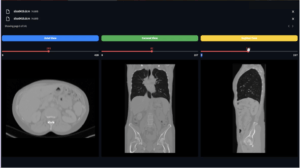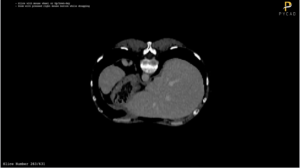Guidelines for Entering the Medical Imaging Field
This blog post will differ from my usual content. Instead of delving into technical aspects of the medical imaging field, I will guide you through the basics of computer vision for medical imaging. I have received numerous messages and emails from students, junior engineers, and recent graduates asking for guidance on how to begin learning or pursue a career in medical imaging. For this reason, I decided to write this post to serve as both their and your guide to starting your journey.
Important Note!
To succeed in the medical imaging field, you must integrate two distinct areas of expertise: knowledge of pure computer vision and familiarity with medical terminology, such as data types and anatomy, which are crucial in this field. For example, if you are a doctor, you likely have a solid understanding of the medical aspects. Conversely, if you are a computer vision engineer, you are probably well-versed in the technical side. To excel as an expert in medical imaging, you need to merge these experiences. Without a grasp of file formats and anatomy, you won’t be able to devise effective solutions for specific projects. Similarly, lacking a foundational understanding of computer vision prevents you from creating AI solutions for medical imaging.
Who Are You?
Based on who you are, I will offer advice and resources to help you begin your journey.
If You Are in the Computer Vision Field:
If you are a computer vision expert, you need to start familiarizing yourself with medical terms and file formats. To aid in this, there are numerous resources available. I will mention some resources we provide, as well as others that may be of interest.
- Free medical imaging ebook.
- 30-day collection of medical imaging notebooks.
- Bunch of YouTube videos about medical imaging (our channel).
- Interesting YouTube channel with a lot of medical imaging projects.
- Interesting video showing how to build a medical imaging solution without AI.
These are just a few of the resources available online that can help you learn about medical imaging. As I mentioned, understanding file formats is crucial. On our YouTube channel, we offer two courses that explain how DICOM and NIFTI files work. These courses also provide insights into the various libraries used to read and manipulate these files.
After discussing file formats and how to begin working with them, I want to address another vital aspect of your medical imaging journey: anatomy. This part can be a bit tricky. As you are not a medical student, you don’t need to learn all the anatomy available. Instead, you should focus on learning the relevant anatomy as you work on specific projects. For instance, if you are working on a project that involves segmenting or classifying hand bones, then you will need to understand some basic hand anatomy and the technologies used in imaging, such as CT scans or standard X-rays.
To do this, you can start by exploring existing projects in the medical imaging field, attempt to solve them on your own, and understand all the elements I mentioned — file formats, scan modalities (CT, MRI, etc.), and the anatomy of the organ of interest.
If You Are in the Medical Field:
Now, if you are in the medical field — for example, a doctor, medical student, or biomedical student — you need to start learning a bit about pure computer vision. The first thing I recommend is gaining a basic understanding of machine learning, especially Convolutional Neural Networks (CNNs), which are crucial for working in the computer vision field. There are illimited resources available, both free and paid. I will mention some of the materials that I find interesting.
- Machine Learning Specialization.
- Neural Networks and Deep Learning.
- Convolutional Neural Networks.
- Introduction to Machine Learning in Production.
After you learn the basics, you can begin working on small projects, even those outside the medical imaging field. Start by developing solutions for image classification, object detection, or segmentation. Once you have practiced with standard images, you can transition to medical images. Apply the same computer vision knowledge and combine it with your understanding of the medical field to work on medical imaging projects. Here are some examples that you can use as a starting point.
- Medical Image Classification.
- Medical Image Detection (object detection).
- Medical Image Segmentation 2D.
- Medical Image Segmentation 3D.
If You Are in a Different Field:
If you are neither a medical expert nor a computer vision expert, then you need to do both steps mentioned before, where you need to learn the computer vision things and the medical things.
I believe this is a good starting point to help you plan for your future career. Keep in mind that you should pursue this field because you love it, not just because you find yourself working in it. Learning about medical imaging can sometimes be tricky and frustrating. For this reason, I highly recommend working in this field only if you truly enjoy it. Believe me, if you have a passion for it, you will excel, and excelling in medical imaging could potentially save lives with the solutions you develop!



